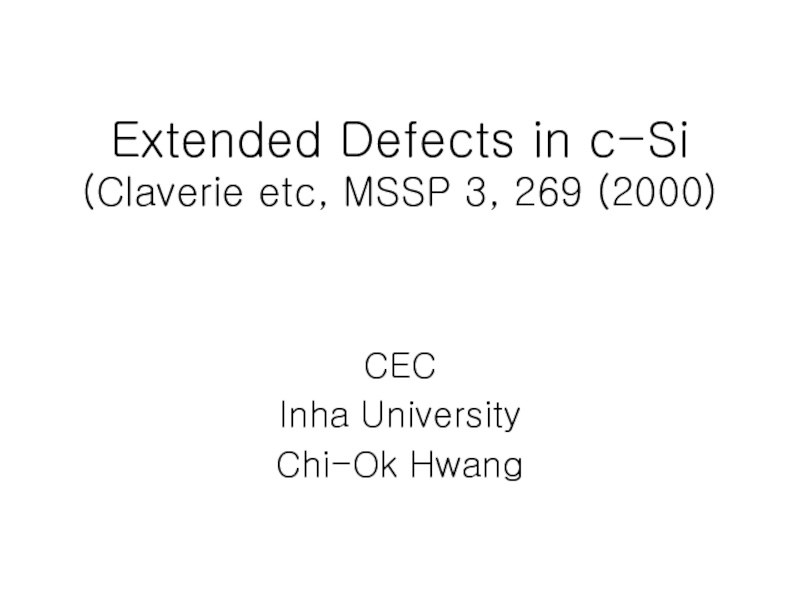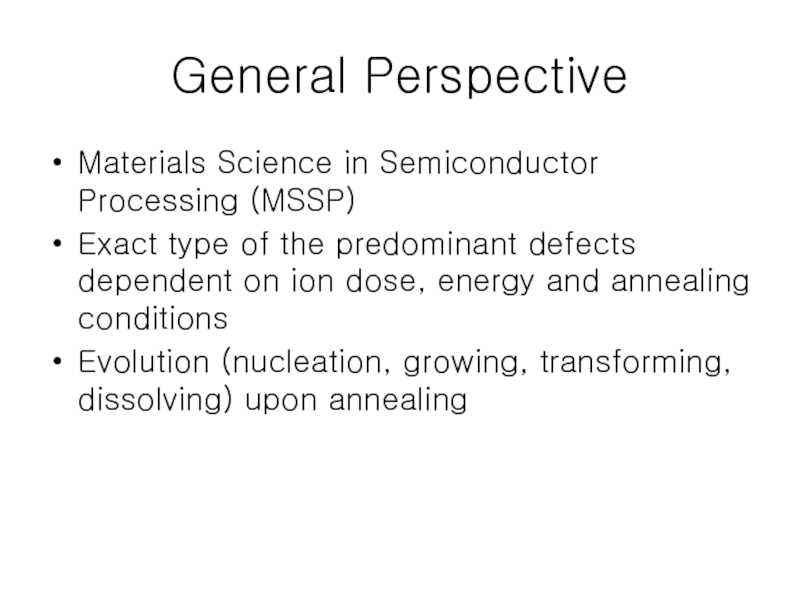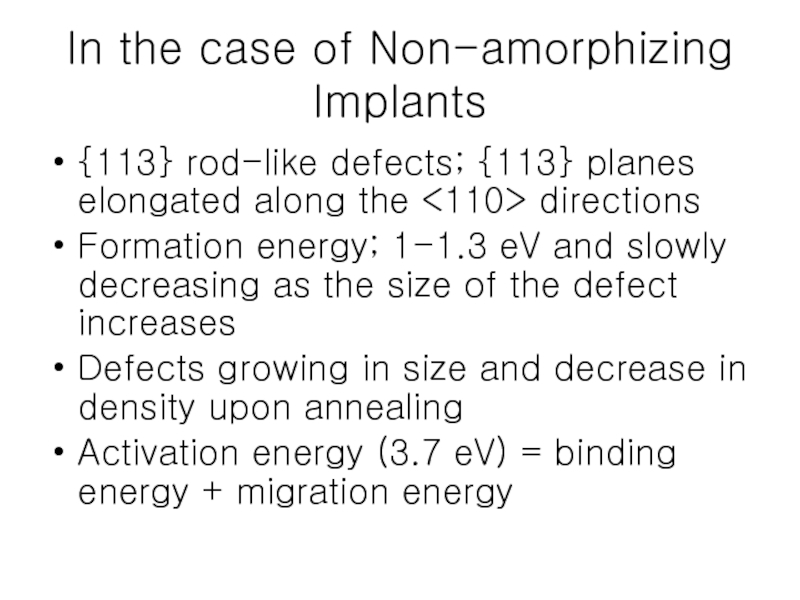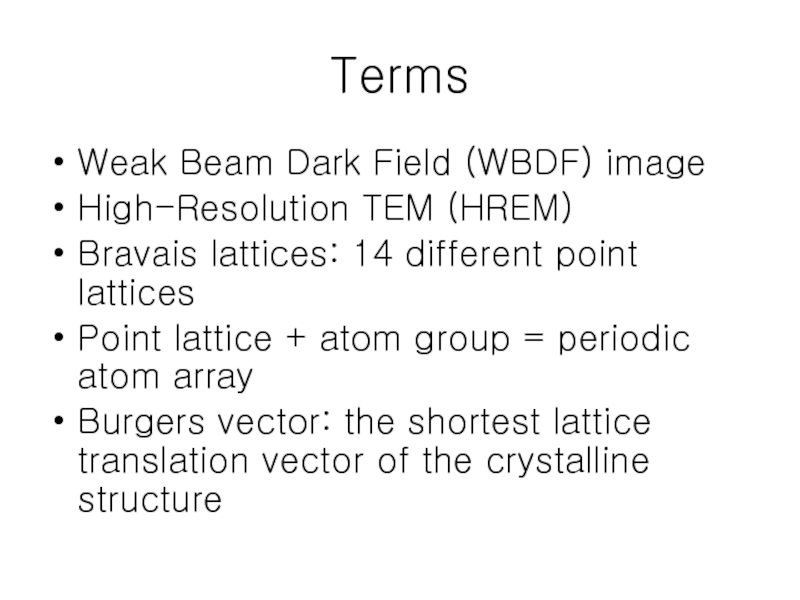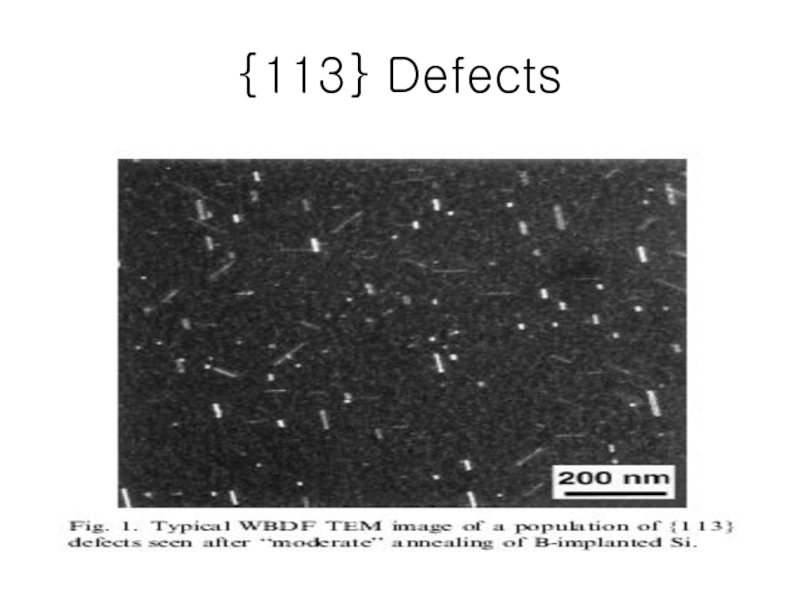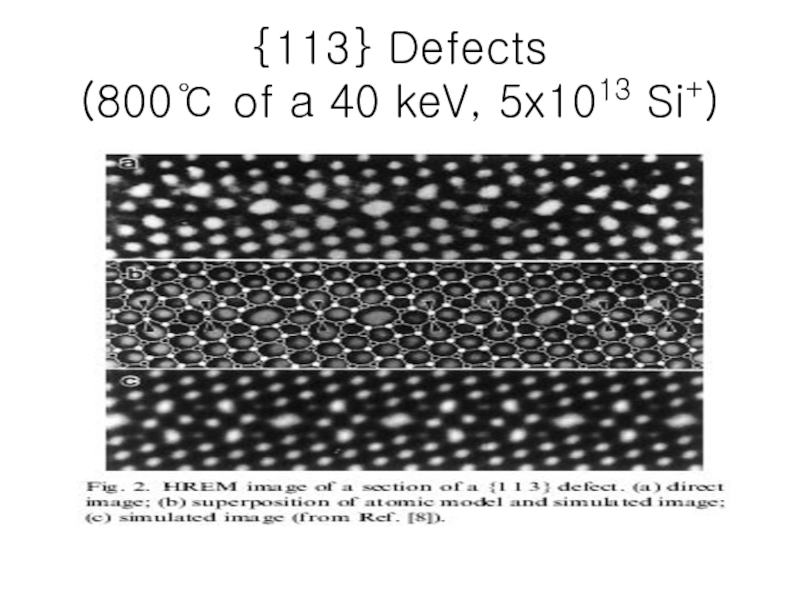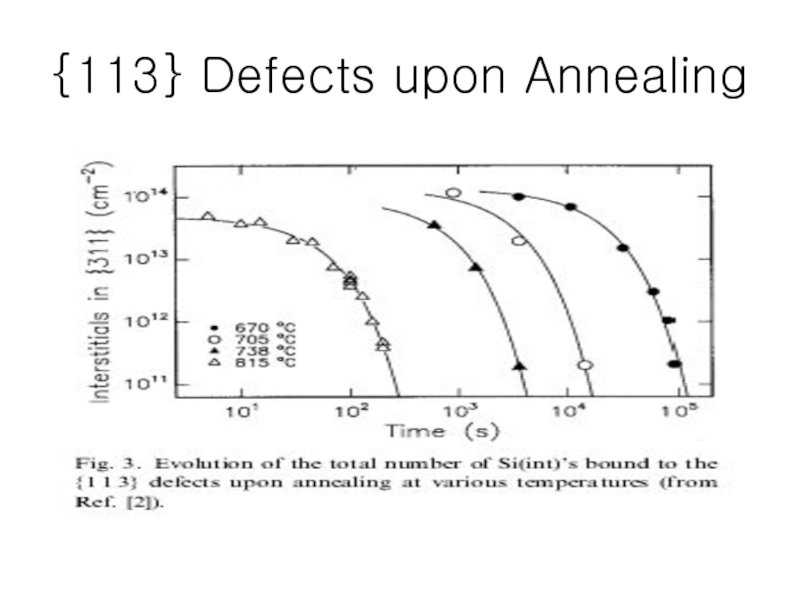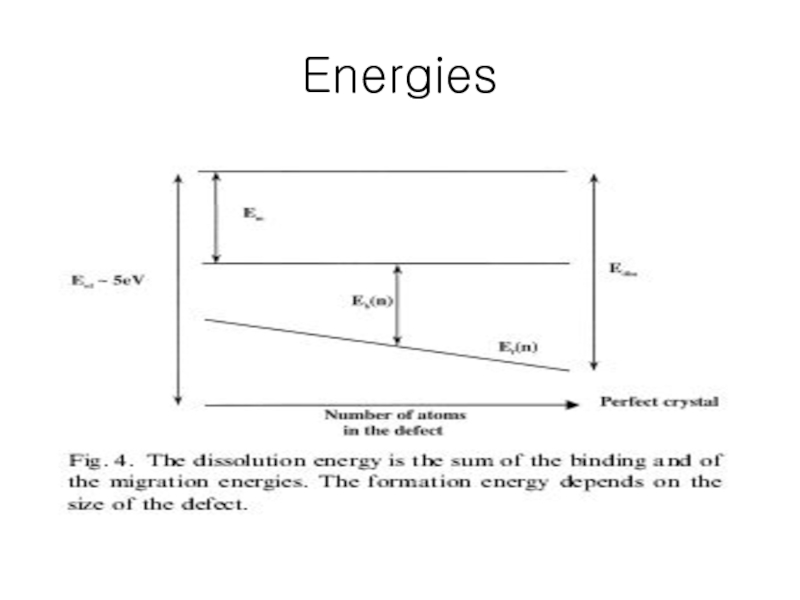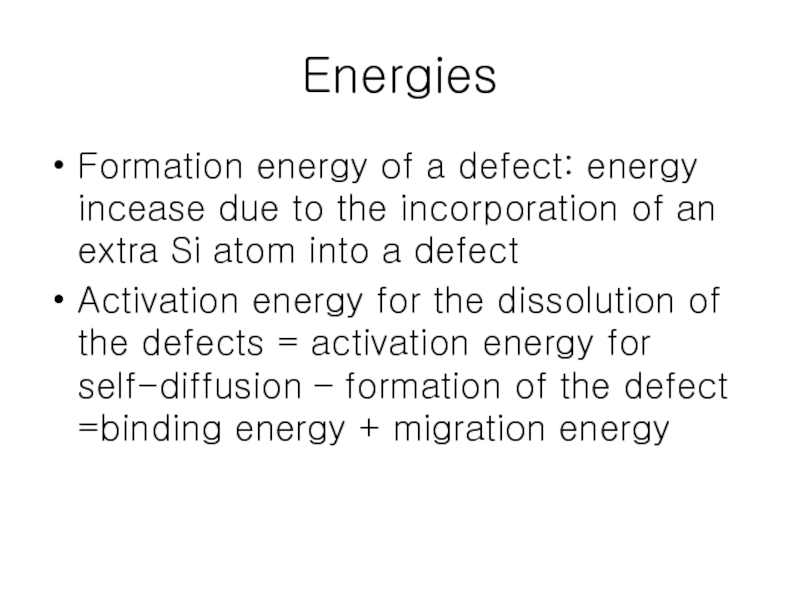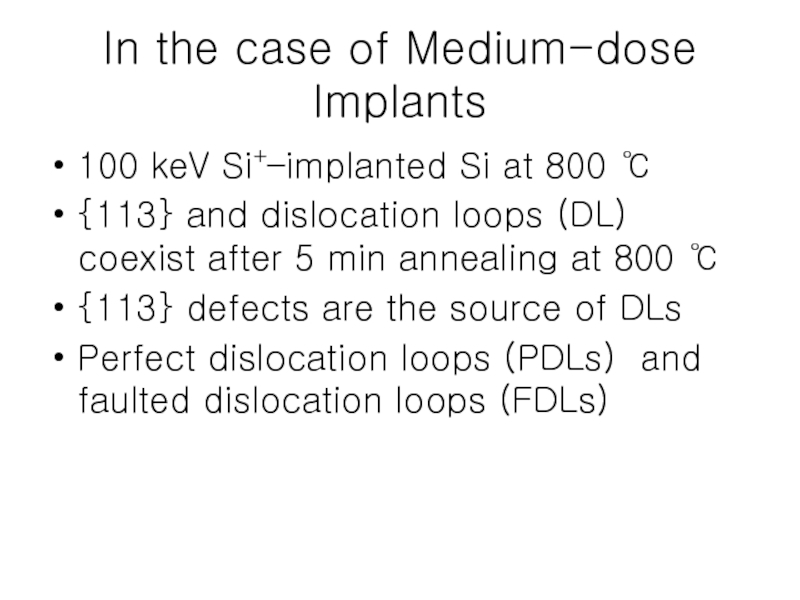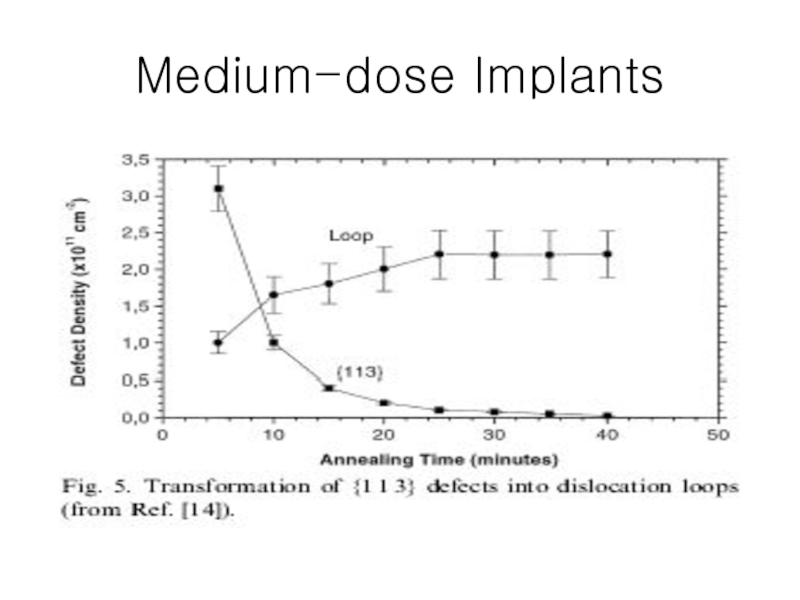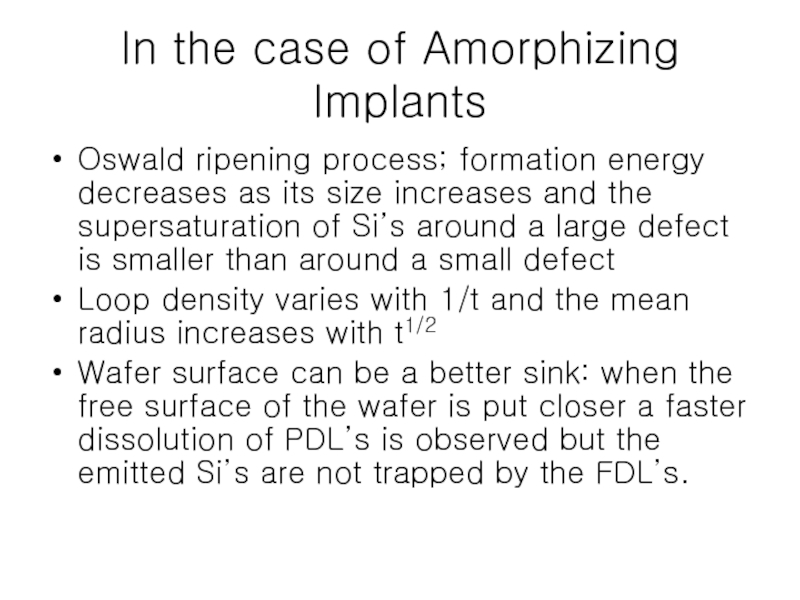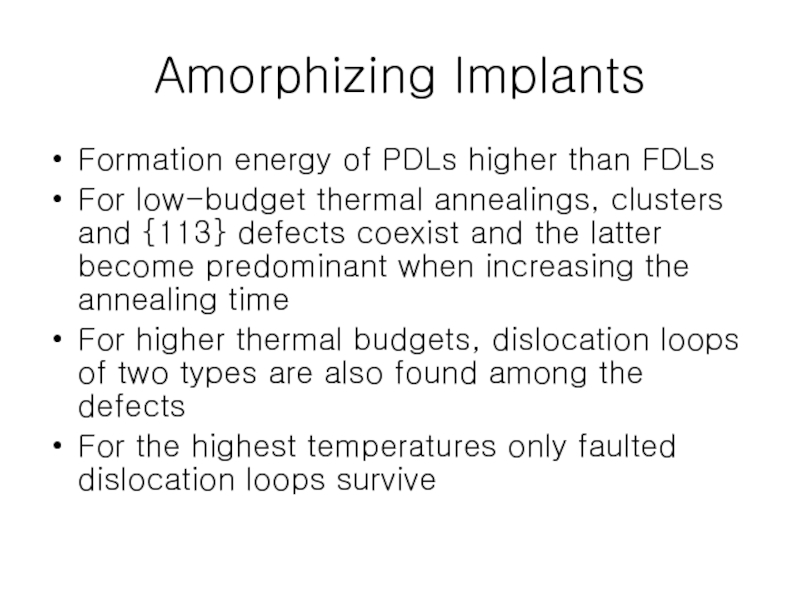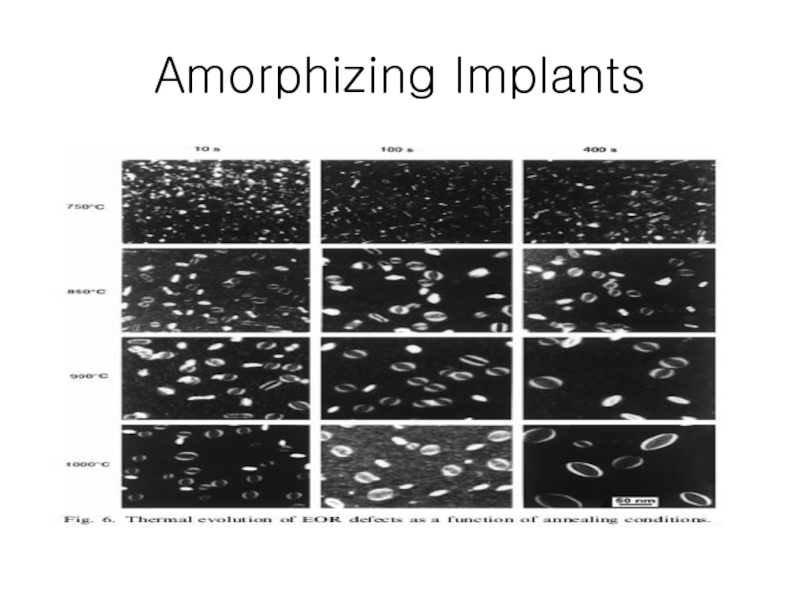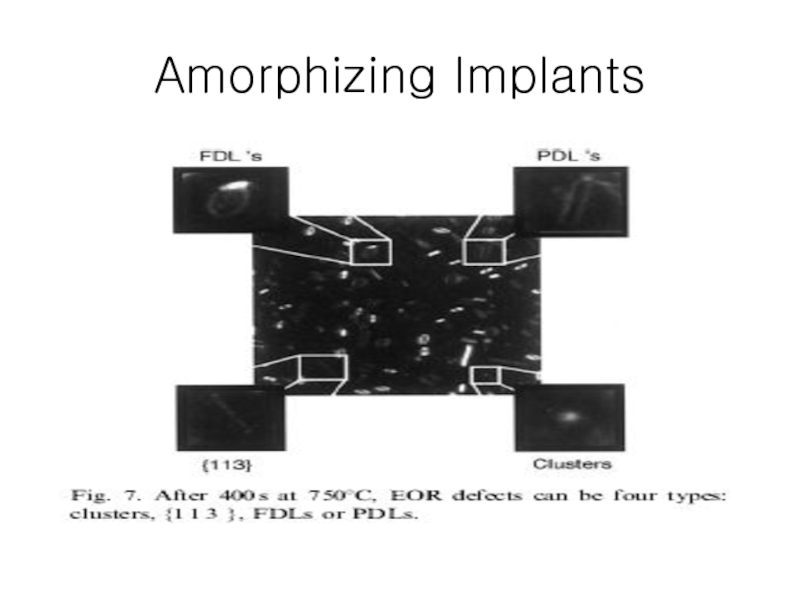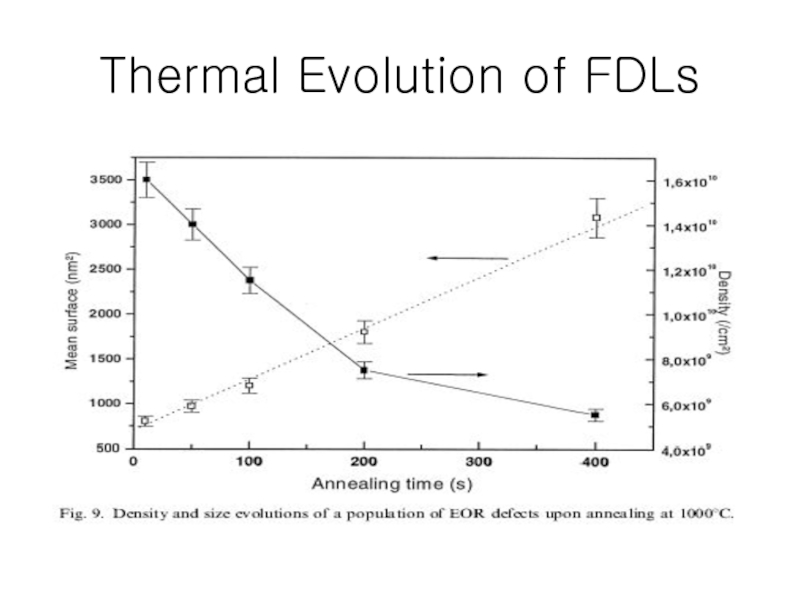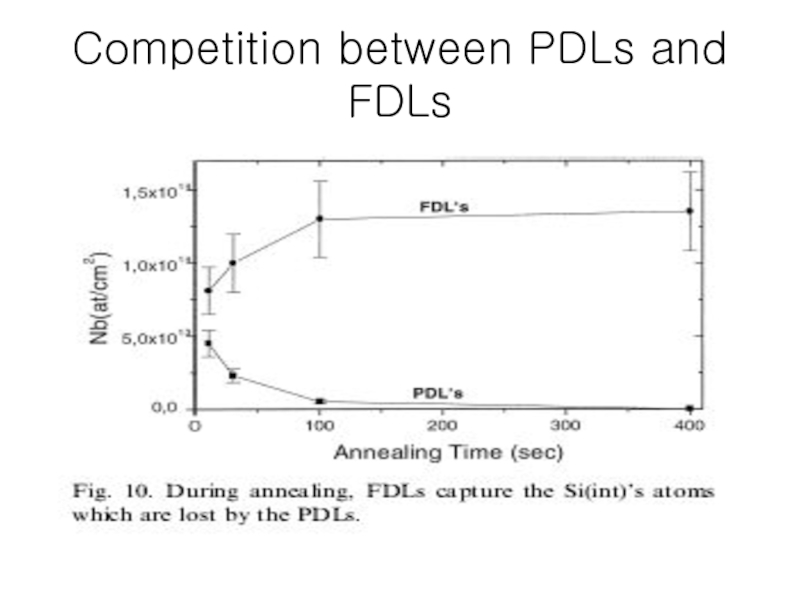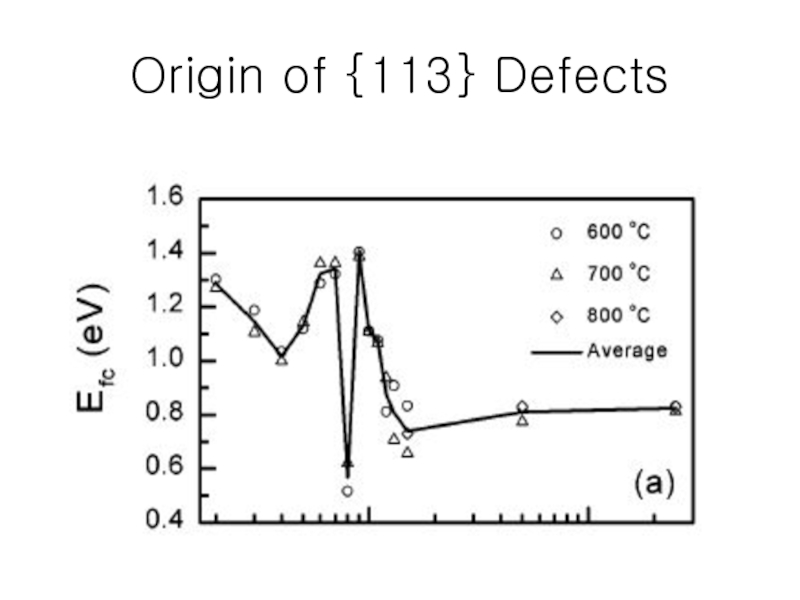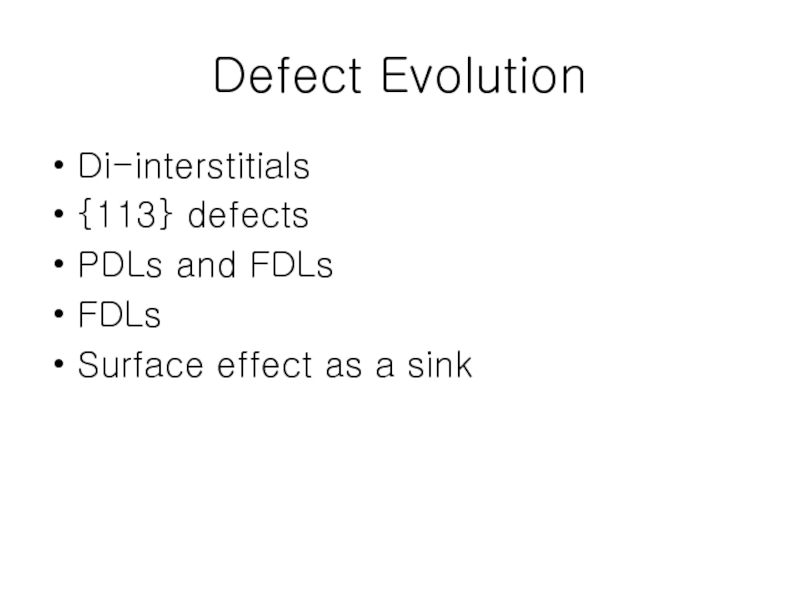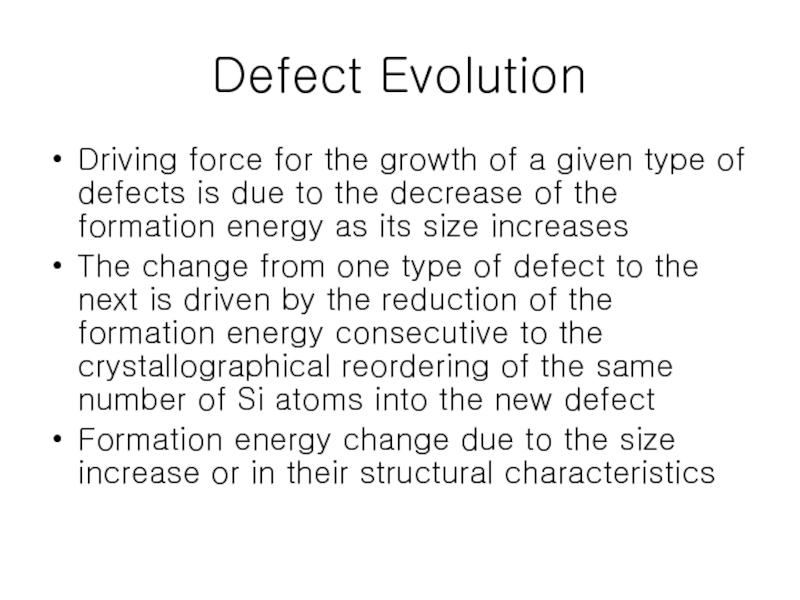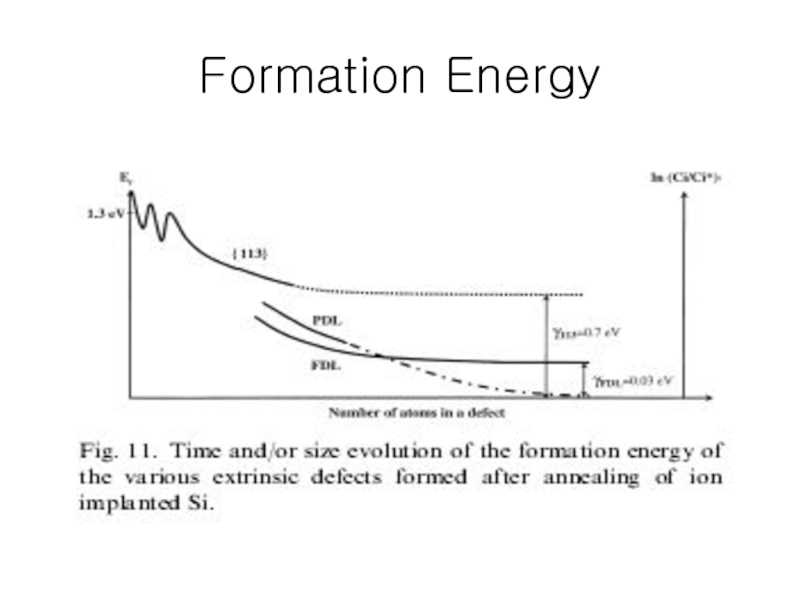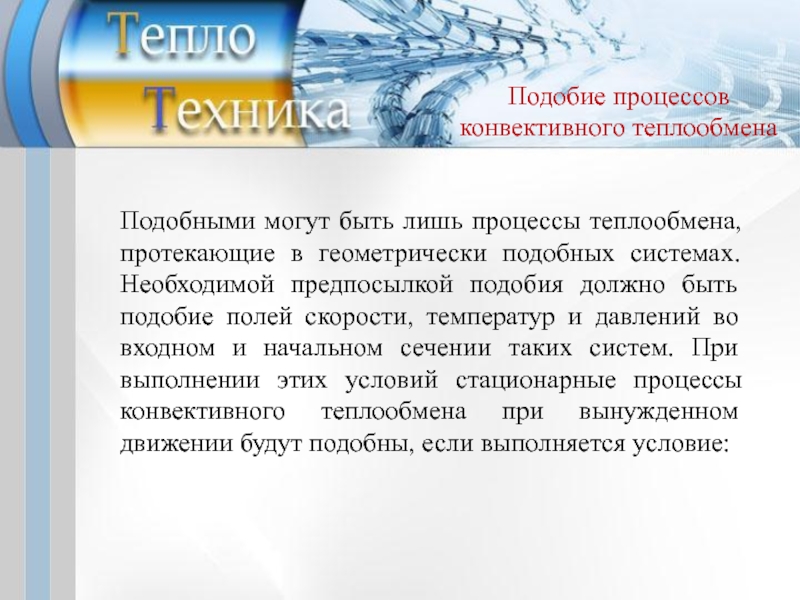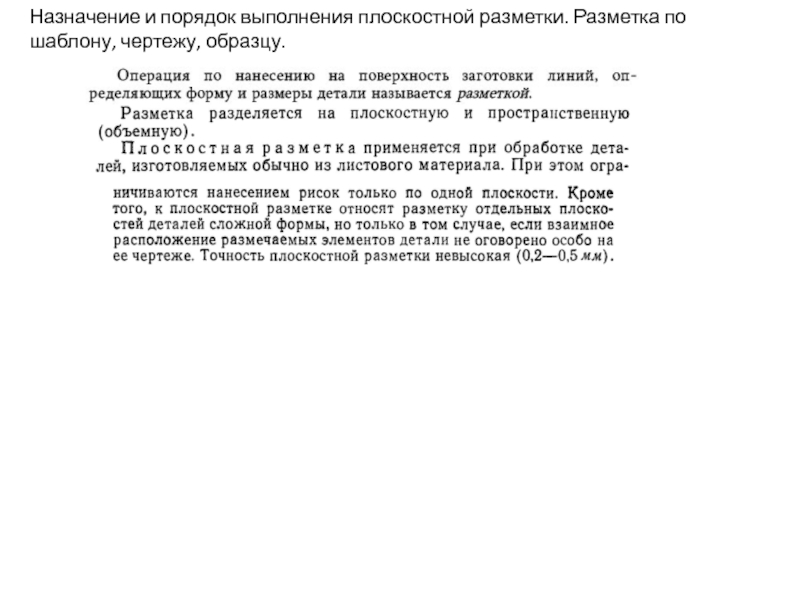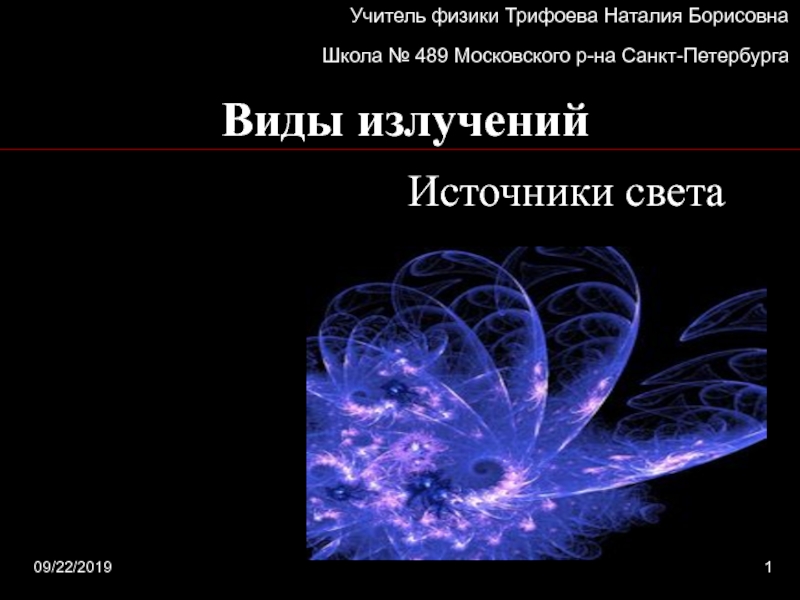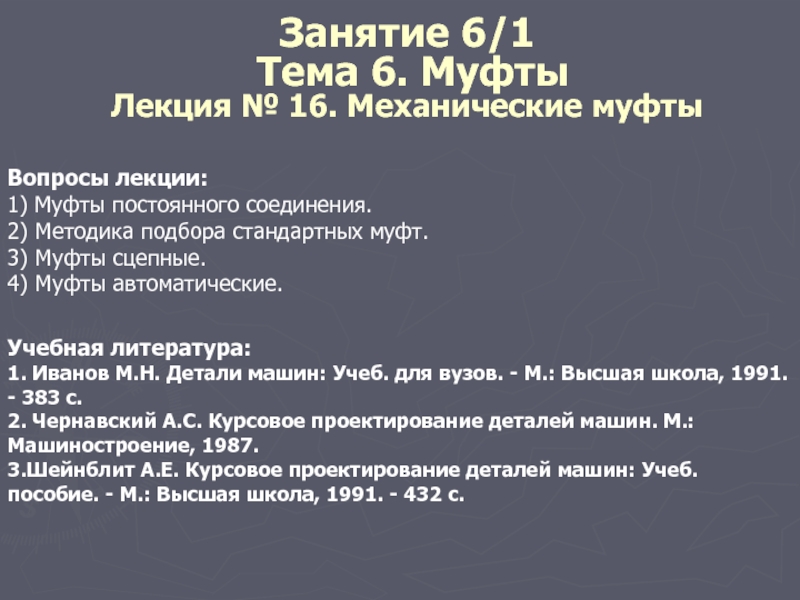Hwang
- Главная
- Разное
- Дизайн
- Бизнес и предпринимательство
- Аналитика
- Образование
- Развлечения
- Красота и здоровье
- Финансы
- Государство
- Путешествия
- Спорт
- Недвижимость
- Армия
- Графика
- Культурология
- Еда и кулинария
- Лингвистика
- Английский язык
- Астрономия
- Алгебра
- Биология
- География
- Детские презентации
- Информатика
- История
- Литература
- Маркетинг
- Математика
- Медицина
- Менеджмент
- Музыка
- МХК
- Немецкий язык
- ОБЖ
- Обществознание
- Окружающий мир
- Педагогика
- Русский язык
- Технология
- Физика
- Философия
- Химия
- Шаблоны, картинки для презентаций
- Экология
- Экономика
- Юриспруденция
Extended Defects in c-Si презентация
Содержание
- 1. Extended Defects in c-Si
- 2. General Perspective Materials Science in Semiconductor Processing
- 3. In the case of Non-amorphizing Implants {113}
- 4. Terms Weak Beam Dark Field (WBDF) image
- 5. {113} Defects
- 6. {113} Defects (800℃ of a 40 keV, 5x1013 Si+)
- 7. {113} Defects upon Annealing
- 8. Energies
- 9. Energies Formation energy of a defect: energy
- 10. In the case of Medium-dose Implants 100
- 11. Medium-dose Implants
- 12. In the case of Amorphizing Implants Oswald
- 13. Amorphizing Implants Formation energy of PDLs higher
- 14. Amorphizing Implants
- 15. Amorphizing Implants
- 16. Thermal Evolution of FDLs
- 17. Competition between PDLs and FDLs
- 18. Origin of {113} Defects
- 19. Defect Evolution Di-interstitials {113} defects PDLs and FDLs FDLs Surface effect as a sink
- 20. Defect Evolution Driving force for the growth
- 21. Formation Energy
Слайд 2General Perspective
Materials Science in Semiconductor Processing (MSSP)
Exact type of the predominant
defects dependent on ion dose, energy and annealing conditions
Evolution (nucleation, growing, transforming, dissolving) upon annealing
Evolution (nucleation, growing, transforming, dissolving) upon annealing
Слайд 3In the case of Non-amorphizing Implants
{113} rod-like defects; {113} planes elongated
along the <110> directions
Formation energy; 1-1.3 eV and slowly decreasing as the size of the defect increases
Defects growing in size and decrease in density upon annealing
Activation energy (3.7 eV) = binding energy + migration energy
Formation energy; 1-1.3 eV and slowly decreasing as the size of the defect increases
Defects growing in size and decrease in density upon annealing
Activation energy (3.7 eV) = binding energy + migration energy
Слайд 4Terms
Weak Beam Dark Field (WBDF) image
High-Resolution TEM (HREM)
Bravais lattices: 14 different
point lattices
Point lattice + atom group = periodic atom array
Burgers vector: the shortest lattice translation vector of the crystalline structure
Point lattice + atom group = periodic atom array
Burgers vector: the shortest lattice translation vector of the crystalline structure
Слайд 9Energies
Formation energy of a defect: energy incease due to the incorporation
of an extra Si atom into a defect
Activation energy for the dissolution of the defects = activation energy for self-diffusion – formation of the defect =binding energy + migration energy
Activation energy for the dissolution of the defects = activation energy for self-diffusion – formation of the defect =binding energy + migration energy
Слайд 10In the case of Medium-dose Implants
100 keV Si+–implanted Si at 800
℃
{113} and dislocation loops (DL) coexist after 5 min annealing at 800 ℃
{113} defects are the source of DLs
Perfect dislocation loops (PDLs) and faulted dislocation loops (FDLs)
{113} and dislocation loops (DL) coexist after 5 min annealing at 800 ℃
{113} defects are the source of DLs
Perfect dislocation loops (PDLs) and faulted dislocation loops (FDLs)
Слайд 12In the case of Amorphizing Implants
Oswald ripening process; formation energy decreases
as its size increases and the supersaturation of Si’s around a large defect is smaller than around a small defect
Loop density varies with 1/t and the mean radius increases with t1/2
Wafer surface can be a better sink: when the free surface of the wafer is put closer a faster dissolution of PDL’s is observed but the emitted Si’s are not trapped by the FDL’s.
Loop density varies with 1/t and the mean radius increases with t1/2
Wafer surface can be a better sink: when the free surface of the wafer is put closer a faster dissolution of PDL’s is observed but the emitted Si’s are not trapped by the FDL’s.
Слайд 13Amorphizing Implants
Formation energy of PDLs higher than FDLs
For low-budget thermal annealings,
clusters and {113} defects coexist and the latter become predominant when increasing the annealing time
For higher thermal budgets, dislocation loops of two types are also found among the defects
For the highest temperatures only faulted dislocation loops survive
For higher thermal budgets, dislocation loops of two types are also found among the defects
For the highest temperatures only faulted dislocation loops survive
Слайд 20Defect Evolution
Driving force for the growth of a given type of
defects is due to the decrease of the formation energy as its size increases
The change from one type of defect to the next is driven by the reduction of the formation energy consecutive to the crystallographical reordering of the same number of Si atoms into the new defect
Formation energy change due to the size increase or in their structural characteristics
The change from one type of defect to the next is driven by the reduction of the formation energy consecutive to the crystallographical reordering of the same number of Si atoms into the new defect
Formation energy change due to the size increase or in their structural characteristics
